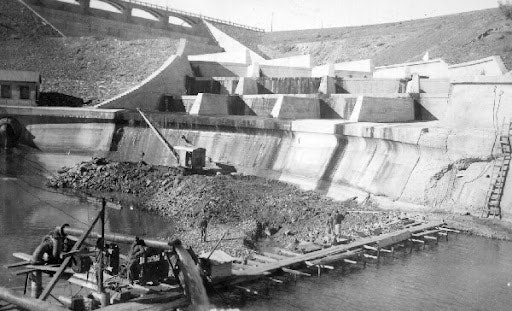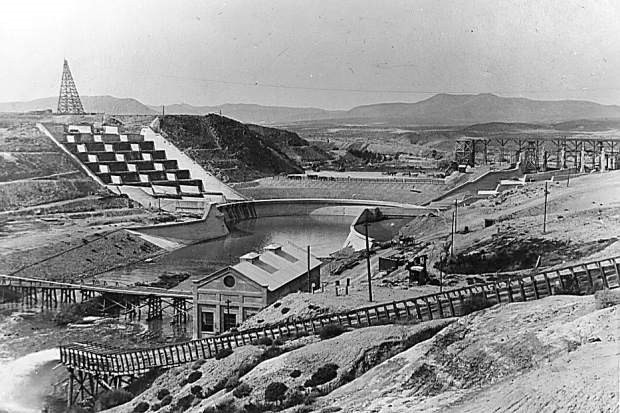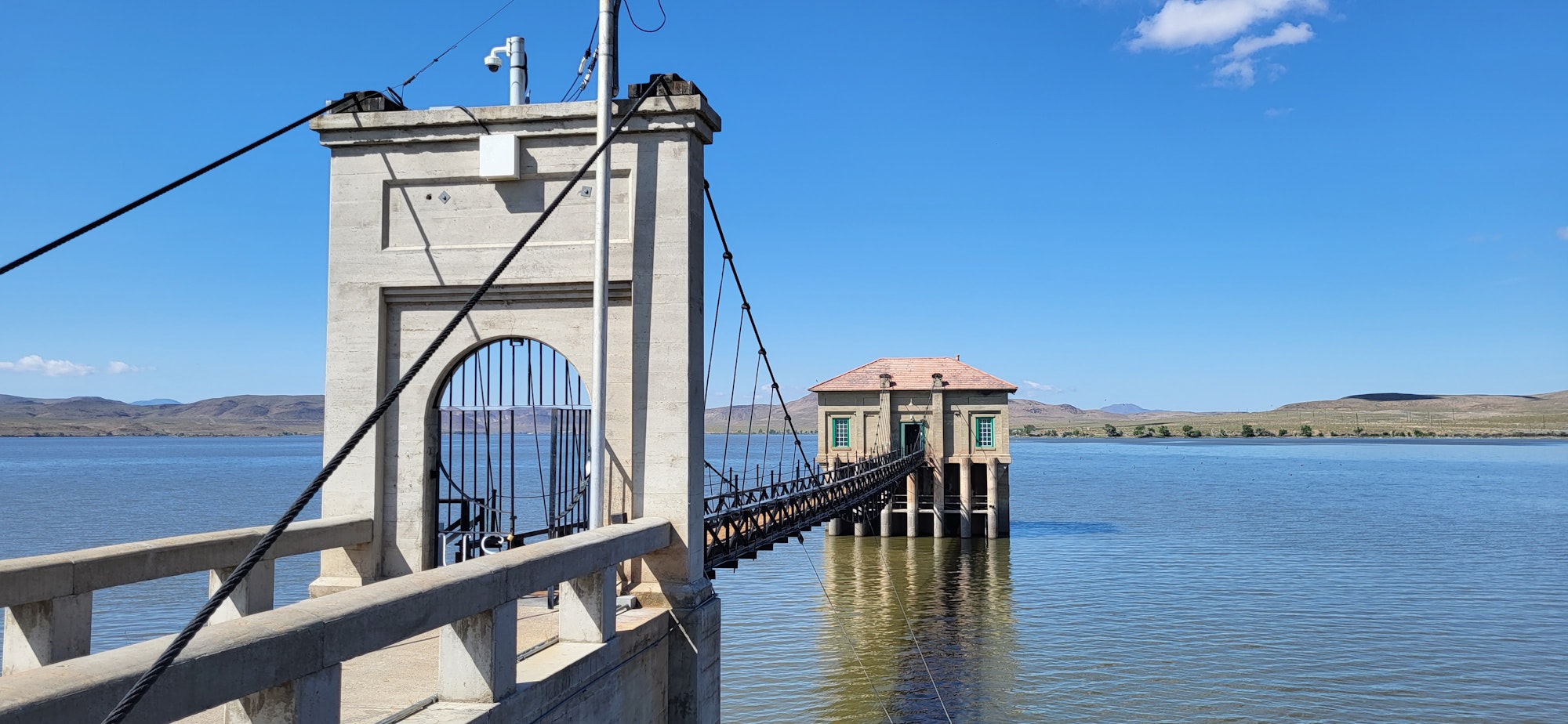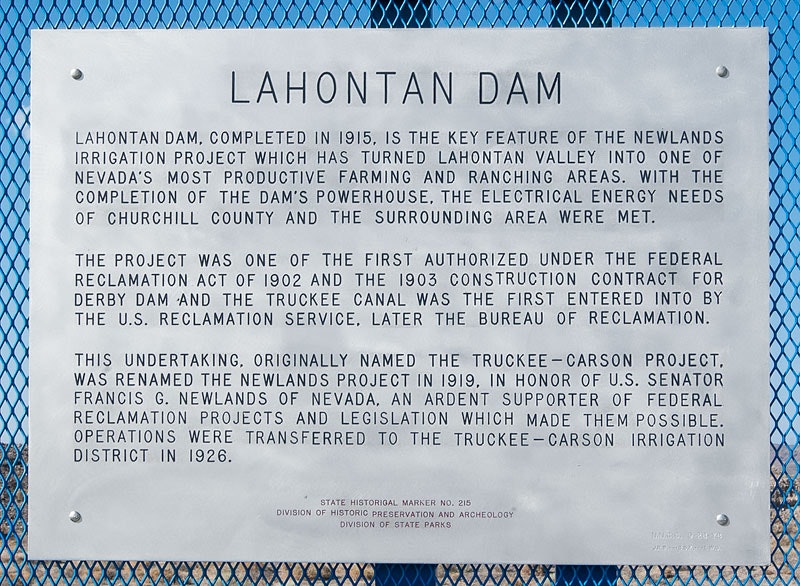Lahontan Dam

In 1911, the United States Reclamation Service (USRS), the predecessor to the United States Bureau of Reclamation, determined to build Lahontan Dam. The lack of late summer irrigation water within the former "Truckee-Carson Project" was a detriment to interest by settlers in the Project. Design of the dam was undertaken by the USRS in 1910 and construction began in February of 1911. The site was purchased from Francis G. Newlands in 1904, as a possible storage reservoir, and was expected to create almost 300,000 acre-feet of water storage annually. A full two years would be needed for construction.
Employment opportunities associated with construction kept many local farmers solvent during Lahontan's development. The cost came in at just above one million dollars ($1,000,000). By 1911, hundreds of workers, steam shovels, tractors and horse teams pulling scrapers and wagons covered the site.

Electric power to construct the dam came from the more than 100-foot fall of the Truckee Canal. Electric motors powered the dragline excavator, as well as a conveyor belt to transport gravel and soil, a 1,600-foot cableway to carry concrete and an electric shovel. According to project manager D. W. Cole, the shovel may have been the first electric one ever in use, handling the dam’s 500,000 cubic yards of gravel less expensively than any coal-powered steam shovel could. The electric machinery proved highly effective and Lahontan Dam, a 162-foot-tall earth and gravel fill structure, was completed in June 1915, its massive outlet tower boasting 12 gates at two different elevations.
Its powerplant, immediately below the dam, still supplies hydroelectric power through transmission lines to the communities of Fallon, Fernley, Wadsworth, Hazen and Stillwater, as well as Indian reservations and rural areas.

Completion of the dam coincided with a general up-turn in economic conditions that preceded the advent of World War I. Interest was then rekindled among settlers seeking unclaimed lands and the Fallon area began to prosper. Fallon’s Hearts O' Gold cantaloupes, grown on irrigated lands, graced the menus of fine hotels and restaurants, and its turkeys brought premium prices. Sugar beets were also a prime crop, and for a short time Fallon even had it's own sugar refinery. Today, our agriculture centers primarily on livestock and alfalfa hay, but Fallon still celebrates it's acclaimed melons in the annual Hearts O’ Gold Cantaloupe Festival and Fair.
At some point, during the national campaign to enact the Federal Reclamation Act of 1902, a western Nevada newspaper (The Gardnerville Courier, September 21, 1900, p. 1) concluded an article on the merits of creating large irrigation systems with the following recommendation:
Let the government build great reservoirs and turn this water into gold!
And so it did!

At maximum storage, Lahontan Reservoir is 17 miles long, covers 10,600 acres, and has a maximum depth of 85 feet near the dam. It has sandy beaches and rock outcroppings, flooded woody debris, a flooded river channel, and various islands. The water is constantly turbid in the upper basin and dense algae blooms generally occur in summer. Better water clarity exists in the large basin near the dam. Located within the Lahontan State Park, the Reservoir is a popular destination for fisherman, bird-watchers and campers. However, although the water in the lake is used for recreational enjoyments, its true purpose and final destination is in the fields of the Carson Division and the wetlands of the Stillwater National Wildlife Refuge.

